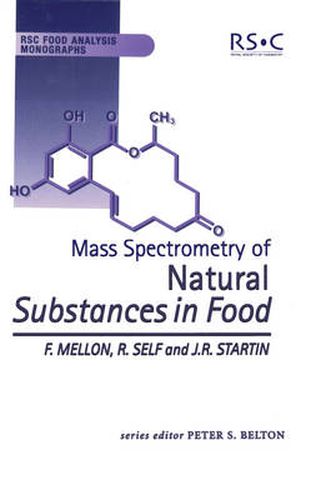Readings Newsletter
Become a Readings Member to make your shopping experience even easier.
Sign in or sign up for free!
You’re not far away from qualifying for FREE standard shipping within Australia
You’ve qualified for FREE standard shipping within Australia
The cart is loading…






Introducing the principles, practice and applications of mass spectrometic techniques in the study of natural substances in foods, this book coveys the depth and breadth of modern mass spectrometry in relation to food analysis. It covers traditional techniques such as electric and chemical ionisatin and newer soft ionisation techniques such as matrix-assisted laser desorption ionisation and electrospray. All of these techniques are especially relevant in food quality and safety studies and in biopolymer analysis. The ability to analyse biopolymers by mass spectrometry is having a major impact on the study of food structure components, food proteins, food pathogens, and food components produced from genetically modified organisms. The principles and practice of mass spectrometry are covered in the early chapters and are followed by applications in flavour analysis and the determination of of non-nutrient, biologically-active, natural substances in foods. The analysis and metabolic studies of amino acids, peptides, protiens, lipids, sugars, carbohydrates and vitamins is also discussed, with separate chapters on mineral and micronutrient metabolism and techniques of pyrolysis mass spectrometry.
$9.00 standard shipping within Australia
FREE standard shipping within Australia for orders over $100.00
Express & International shipping calculated at checkout
Introducing the principles, practice and applications of mass spectrometic techniques in the study of natural substances in foods, this book coveys the depth and breadth of modern mass spectrometry in relation to food analysis. It covers traditional techniques such as electric and chemical ionisatin and newer soft ionisation techniques such as matrix-assisted laser desorption ionisation and electrospray. All of these techniques are especially relevant in food quality and safety studies and in biopolymer analysis. The ability to analyse biopolymers by mass spectrometry is having a major impact on the study of food structure components, food proteins, food pathogens, and food components produced from genetically modified organisms. The principles and practice of mass spectrometry are covered in the early chapters and are followed by applications in flavour analysis and the determination of of non-nutrient, biologically-active, natural substances in foods. The analysis and metabolic studies of amino acids, peptides, protiens, lipids, sugars, carbohydrates and vitamins is also discussed, with separate chapters on mineral and micronutrient metabolism and techniques of pyrolysis mass spectrometry.